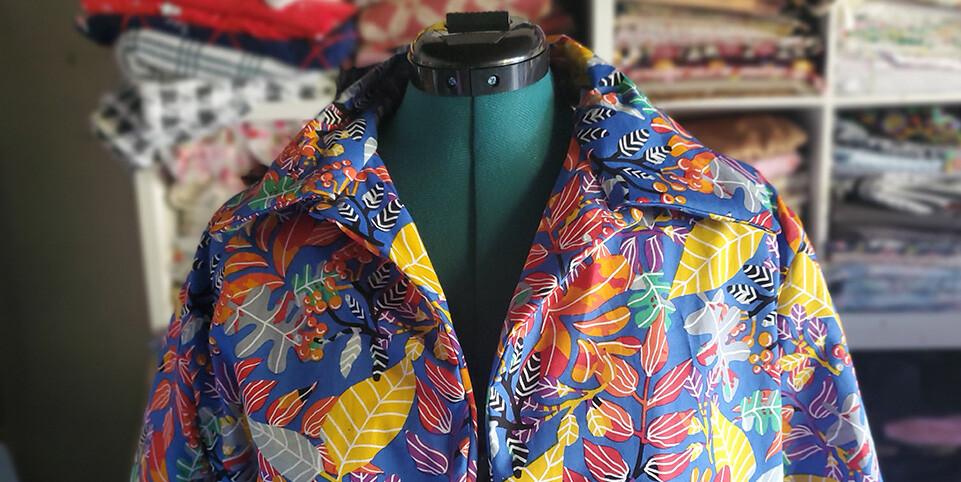When it comes to cosplay, everyone wants to look their best. It makes sense: you are recreating the image of your favorite movie, television show, comic book, anime, or popular culture character to be for a day. Many people wear their cosplays to conventions to show off their hard work and authenticity for other fans. Some people wear cosplay as part of a live-action roleplaying game or hobby. No matter the reason, there are a lot of considerations to make when creating an authentic costume. You must consider the type of costume, the necessary materials, any accessories, and any other aspect of the costume itself, not to mention your budget. With all this, choosing the right fabric for your cosplay is equally essential. Anybody going to their first cosplay event should read on to find which material works best for them.
Natural Fibers
Natural fibers are those from plants or animals. They make for great cosplay materials as they adhere to body shapes and can retain heat. One of the main benefits of natural fibers is that they’re breathable. This is especially important when you attend your favorite convention or exposition where there are thousands, if not tens of thousands, of other attendees. With everyone together in one room, that can make for a very uncomfortable situation if you aren’t wearing the right materials.
Cotton
Cotton is a soft natural fiber native to tropical and subtropical parts of the world. It is one of the universally popular fabrics in the world, with a history dating back to 6000 BCE. With cosplay, cotton is comfortable, soft, and easy to wear. It has natural alkalis, which give it an acid resistance. However, it is weak and crumples easily. Keep in mind that not every cotton strand is the same, meaning you can get thick cotton one time and one that wrinkles easily the next.
Linen
Linen is a cloth-based textile from the flax plant. The fibers are strong, moisture absorbent, and dry faster than cotton. One of the main advantages of linens is that they provide coolness in hot weather. They are alkali resistant and breathable when worn. Linens tend to have a rustic, albeit sometimes rough, texture that is easily washable and dyeable. It can wrinkle easily, but you can always use this to your advantage if it’s pertinent to your costume.
Wool
This is a naturally occurring fabric from sheep hair. The naturally occurring crimps provide the wool with a soft and spongy feel. Specifically, wool is one of the best fibers to wear all year round because it warms the wearer in the cold and cools them in the heat. It also has natural UV protection, which is useful for outside events. The natural elasticity makes wool durable and resilient to wear. Still, keep in mind for your next cosplay idea that wool is pricier and more difficult to wash than other fabrics.
Silk
Silk is one of the most common natural fibers for costume design due to its soft texture and shiny appeal. Silkworms produce sericin and fibroin, proteins that compose silk’s physical structure. For cosplay outfits, silk is very flexible. It has great insulation properties and is moisture resistant. While incredibly soft and smooth, silk is quite expensive and requires special care—many amateur seamsters don’t realize that silk can collect water drops and be an overall hassle to work with. While you should spare it for exquisite or special costumes, given its relatively high cost, silk will give you a beautiful, shiny suit or gown.
Synthetic Fibers
Synthetic fibers hold up far better than natural fabrics due to the chemical process that creates them, but there are also some issues you might run into. Most synthetic fibers stretch, resist water and stains, and are hardier against oil, sunlight, and general wear and tear. On the other hand, they can burn more readily, melt, shrink, and are not biodegradable. Additionally, synthetic fibers can cause allergic reactions and general discomfort more than natural fibers.
Nylon
Nylon is one of the most commonly used synthetic fibers today. It is primarily useful for knitting and hosiery because it’s smooth, lightweight, and strong. Many nylon products have a blend to further increase its durability. You can use many dyes on nylon, and it will retain its color. Also, its elasticity makes it a comfortable, easy-care fabric option.
Acrylic
Acrylic fibers are a polymer composition with at least 85% acrylonitrile monomer. Popularity for the fiber began in the 1940s and 1950s to make sweaters, tracksuits, boots, and gloves. Acrylic fibers feel similar to wool and have a lightweight, soft, and warm texture. It’s a common knitting option, although many knitters find displeasure with the lack of stretch and the squeaky noise it makes. Still, acrylic is a flexible, lightweight fiber that can resist abrasions and UV damage.
Spandex
Spandex is a synthetic fiber that is incredibly elastic. It is typically used in swimwear and athletic wear, but spandex also makes a great cosplay fabric. It is resistant to water and oil and dries exceptionally fast. Spandex is an incredibly popular option for cosplay because it’s the most breathable. That’s why athletes wear it during their competitions after all. Spandex doesn’t collect sweat or other moistures, and its elasticity allows for a more comfortable cosplay experience.
Neoprene
Neoprene is a synthetic rubber that is perfect for props or costumes. Its spongey texture makes it ideal for weapons and armor as it won’t cause any actual harm. It’s also durable, which makes it ideal for outdoor use. Not to mention, it’s flexible and wearable in a wide temperature range. While it might come across as bulky, neoprene is the perfect insulator and air-resistant material for outdoor cosplay. Given this information, it’s unsurprising that neoprene also makes for a great face mask fabric.
No matter which fabric you choose, be sure to check out our selection of apparel fabric for your next cosplay idea. You don’t have to be an experienced cosplayer to know how to create your dream costume. To get you started, check out our tutorials for Sailor Moon, Cinderella, Stranger Things, medieval-themed, and other themed costumes.

 Transparent
Transparent
 White
White
 Pink
Pink
 Red
Red
 Orange
Orange
 Ivory
Ivory
 Yellow
Yellow
 Gold
Gold
 Brown
Brown
 Green
Green
 Blue
Blue
 Purple
Purple
 Grey
Grey
 Black
Black
 Multi
Multi
 Abstract
Abstract
 African Print
African Print
 Animal Print
Animal Print
 Baby & Nursery
Baby & Nursery
 Buffalo Check
Buffalo Check
 Camo Print
Camo Print
 Celestial
Celestial
 Chevron
Chevron
 Church
Church
 Damask
Damask
 Embroidered
Embroidered
 Floral
Floral
 Geometric
Geometric
 Gingham Check
Gingham Check
 Houndstooth
Houndstooth
 Licensed
Licensed
 Paisley
Paisley
 Plaid
Plaid
 Polka Dot
Polka Dot
 Sports
Sports
 Stripe
Stripe
 Tie Dye
Tie Dye


